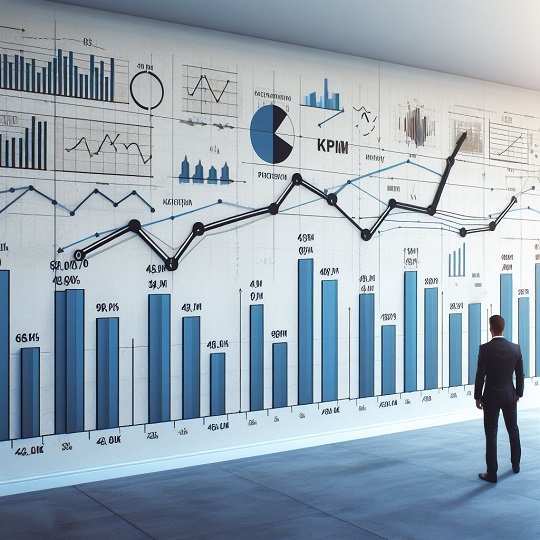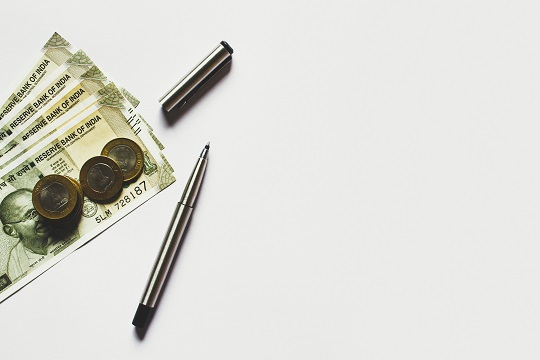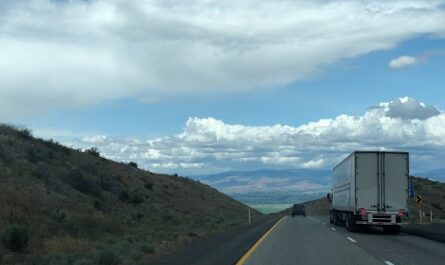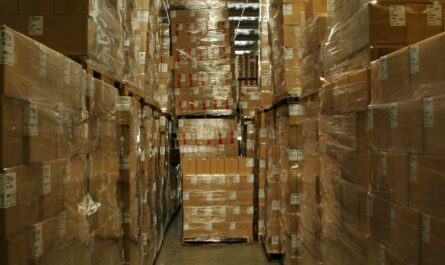Starting a new production facility is a big task that requires careful planning. Whether you’re growing an existing operation or starting fresh, the choices you make in the beginning can really affect how well the facility works, how sustainable it is, and how successful it is in the long run.
This guide will look at ten important things you should think about before starting construction on a new production facility.
Before we go further into this topic, don’t forget to follow my LinkedIn account. You’ll get more helpful insights on supply chain management there.
Table of Contents
Location, Location, Location
Picking the best spot for your production facility is a crucial decision that affects how well your operations run.
You need to think about things like being close to raw materials, suppliers, and good transportation to keep things efficient and costs down.
Being near your target customers is also important for quick delivery.
It’s vital to have reliable utilities like water, electricity, and gas to keep production running smoothly.
Understanding and following local rules and laws is a must to avoid problems and legal issues.
Basically, choosing the right location is the key to having a successful and sustainable production facility.
The location you choose also has a big impact on the environment. Going for a site with eco-friendly practices not only fits with ethical standards but can also make your brand more attractive to environmentally conscious consumers.
Balancing convenience with environmental responsibility sets your production facility up for long-term success in a competitive and eco-friendly market.
So, picking the right location is not just about making things easier—it involves smart decisions that shape the foundation of a successful production facility.
Market Analysis and Demand Forecasting
Before starting a new production facility, it’s crucial to thoroughly analyze the market and predict demand. This important step involves looking closely at different market factors to make sure your venture is viable and has the potential for success.
By studying current market trends, you can learn about what consumers like, industry changes, and emerging patterns that might impact how you produce things. Knowing your target audience is also key to making products that meet their needs.

Accurate demand forecasting is the key to planning your production facility strategically. By looking at past data and considering things like economic trends, you can predict future demand for your products more accurately.
This insight helps you figure out the right size and capacity for your facility, so it matches market demands and growth expectations. Whether you need to scale up to meet higher demand or stay flexible to adjust to market changes, understanding the market well lets your production facility navigate competition effectively.
In short, combining market analysis and demand forecasting is the foundation for a strong and forward-thinking production strategy, putting your facility in a good position for long-term success in the marketplace.
Technology and Automation Integration
In today’s fast-paced production world, technology and automation are big game-changers shaping the industry. Before building a new production facility, it’s crucial to thoroughly check out the latest technologies that fit your specific industry.
This means staying updated on the newest advancements that can revolutionize how things are made and boost efficiency.
Using automation systems, robotics, and Industry 4.0 practices is not just a trend; it’s necessary to stay competitive in today’s market.
These technologies not only increase productivity but also cut costs by making operations smoother and reducing mistakes.
Embracing automation isn’t just about following a trend—it’s a must to stay competitive. Adding these technologies to your new facility puts your operations at the forefront of innovation, making sure your production processes can quickly adapt to changes in demand.
Following Industry 4.0 principles, like connecting systems and using real-time data analytics, not only makes operations more efficient but also creates a production environment that’s flexible and resilient.
By keeping up with these technological advancements, you not only future-proof your operations but also give your facility a competitive edge in an industry that’s rapidly evolving technologically.
You might also like:
- Top 10 Production Planning Best Practices for Success
- Crafting Your Perfect Production Plan: Let’s Dive In!
Environmental Sustainability
In today’s world, where being environmentally friendly is important, building sustainable production facilities is not just a choice—it’s a must.
Before starting a new facility, it’s crucial to carefully consider eco-friendly elements. This includes using construction materials that have a minimal impact on the environment and incorporating energy-efficient systems and technologies.

Not only does this show responsibility toward the environment, but it also leads to long-term cost savings by using less energy.
Managing waste is another important aspect of being sustainable. Practices that reduce waste and increase recycling not only help the environment but also cut down on the costs of getting rid of waste.
Also, using renewable energy sources in the facility’s energy mix shows a commitment to sustainability.
Apart from saving costs, adopting sustainable practices creates a positive image for your brand, appealing to consumers who care about environmentally friendly businesses.
In summary, making a commitment to sustainability in building and operating a production facility is not only about ethical business conduct but also about making the facility more resilient in a world where the environment is changing rapidly.
Regulatory Compliance and Permitting
When building a production facility, dealing with rules and getting necessary permits is a crucial and non-negotiable step.
It’s essential to work with legal experts and regulatory authorities to make sure the facility follows local, state, and federal regulations. This includes meeting environmental standards, safety rules, zoning laws, and construction codes.
By addressing these requirements upfront, businesses not only show ethical responsibility but also protect themselves from potential legal problems during or after construction.
Ignoring or neglecting regulatory rules can have serious consequences, leading to costly delays and legal issues that could seriously harm the project’s success.
Construction delays can increase expenses, affecting budgets and straining finances.
Legal problems from not following rules can result in fines, lawsuits, and damage to the business’s reputation.
To avoid these risks, it’s crucial to understand the regulatory landscape and work closely with legal experts to make sure the construction process follows the law.
In the end, the effort put into dealing with regulations and getting permits is a key part of building a successful production facility, guarding against potential problems and strengthening the foundation for long-term success.
Cost Analysis and Budgeting
Starting the construction of a production facility is a big project that requires a lot of money.
One of the first and most important steps is carefully analyzing all the costs involved.
This analysis should look at more than just construction expenses—it should also include the cost of equipment, ongoing operation costs, and be ready for any unexpected expenses.

Creating a realistic budget that covers all these aspects is crucial to make sure the project has a strong financial base.
Smart financial planning also means thinking about unexpected challenges.
Things might come up during construction that need extra money, so having a budget that includes some extra funds is not just a precaution but a smart way to avoid spending more than planned.
Knowing the financial details of building the production facility is important for getting funding, whether it’s through loans, investors, or the company’s own resources.
By dealing with the financial side early on, businesses can handle the complexities of construction with financial strength, making sure the project stays on track and doesn’t go over budget.
Workforce Planning and Training
The success of a production facility relies heavily on the skills and efficiency of the workforce. To acknowledge this, it’s crucial to create a detailed plan for the workforce.
This plan should specify how many employees are needed, the specific skills required, and the training programs necessary for skill development.
Checking out the local job market is important, understanding the availability of skilled workers and adjusting recruitment strategies accordingly.
Building partnerships with educational institutions is also key to filling skill gaps.
Working with schools and training centers allows businesses to help develop a skilled workforce from the ground up.
These partnerships can lead to specialized training programs that match the specific needs of the production facility.
By investing in the professional growth and skills of the workforce, businesses not only improve overall efficiency but also contribute to building a skilled workforce, benefiting both the industry and the local community.
In short, a strong workforce plan ensures that the production facility has the talent and skills needed for success and continued excellence.
You might also like:
- Navigating Innovation: Creating a New Product vs. Riding the Trend Wave
- Boosting Profits: Avoiding Overproduction Mistakes with Smart Capacity Management
Supply Chain Resilience
Building a new production facility goes beyond just the physical space—it’s crucial to smoothly fit into the larger supply chain. A key part of this is checking how strong and flexible the supply chain is.
Businesses need to carefully look at possible risks that might mess up the supply chain, like problems with getting things from one place to another or changes in the market.

Finding these risks helps create backup plans so the facility can handle unexpected challenges.
A resilient supply chain also relies on having good relationships with reliable suppliers.
Being open and trustworthy with suppliers creates a partnership that reduces the chances of disruptions and makes the whole supply chain more stable.
Additionally, using smart logistics strategies is really important. This means making transportation networks as efficient as possible, managing inventory well, and using advanced tracking systems.
By making the connections in the supply chain strong, businesses can boost the overall success and resilience of their production facility.
This puts them in a good position to adapt to changes in the market and keep operations going even when unexpected challenges come up.
Future Expansion and Flexibility
When designing a production facility, looking ahead is crucial, and planning for future growth and expansion is a smart move.
Creating flexibility in the layout and infrastructure of the facility is a forward-thinking approach that makes it easy to adjust to changes in production, shifts in products, and new technologies.
Designing a facility that can scale up or change its operations easily allows businesses to respond quickly to market needs and tech advancements without major disruptions.
Planning for scalability from the start not only prepares the facility for the future but also brings real benefits in terms of efficiency and cost-effectiveness.
A flexible layout helps use space and resources efficiently, avoiding the need for expensive changes or expansions later on. This not only saves time and money in the long run but also makes the production facility more agile and competitive.
As industries and markets keep changing, the ability to adapt and grow quickly becomes a clear advantage, ensuring the long-term success and resilience of the production facility in a dynamic business environment.
Risk Management and Contingency Planning
In the complicated world of building and running a production facility, it’s important to recognize that unexpected challenges will happen.
To handle this uncertainty, having a strong plan for managing risks is crucial. This plan should carefully look at possible risks in different parts of the operation, like financial uncertainties, disruptions in the supply chain, the potential impact of natural disasters, and other unexpected events that could threaten the facility’s stability.

By doing a thorough risk assessment, businesses can come up with strategies to deal with challenges before they become bigger problems.
Being ready for unexpected situations not only protects against possible disruptions but also makes the production facility more resilient overall.
A well-thought-out risk management plan acts like a shield, allowing businesses to quickly respond to unforeseen events and minimize their impact.
This not only prevents financial losses but also keeps the reputation and smooth operation of the facility intact.
By promoting a culture of preparedness, businesses set themselves up to handle and bounce back from unexpected challenges, contributing to the long-term success and sustainability of the production facility in a business environment that’s always changing.
Conclusion
Creating a new production facility is a big and detailed project that needs careful planning.
Every choice, like picking the location, being eco-friendly, using technology, and thinking about future growth, plays a role in making the project successful.
By carefully looking at these ten important things, you set up your new production facility for success in a competitive and always-changing business world.
I hope you find it helpful!
Please share this article with your colleagues so they can also benefit. For more insights on supply chain management, follow my LinkedIn account. You’re free to use all articles on this blog for any purpose, even for commercial use, without needing to give credit.

 by
by 

